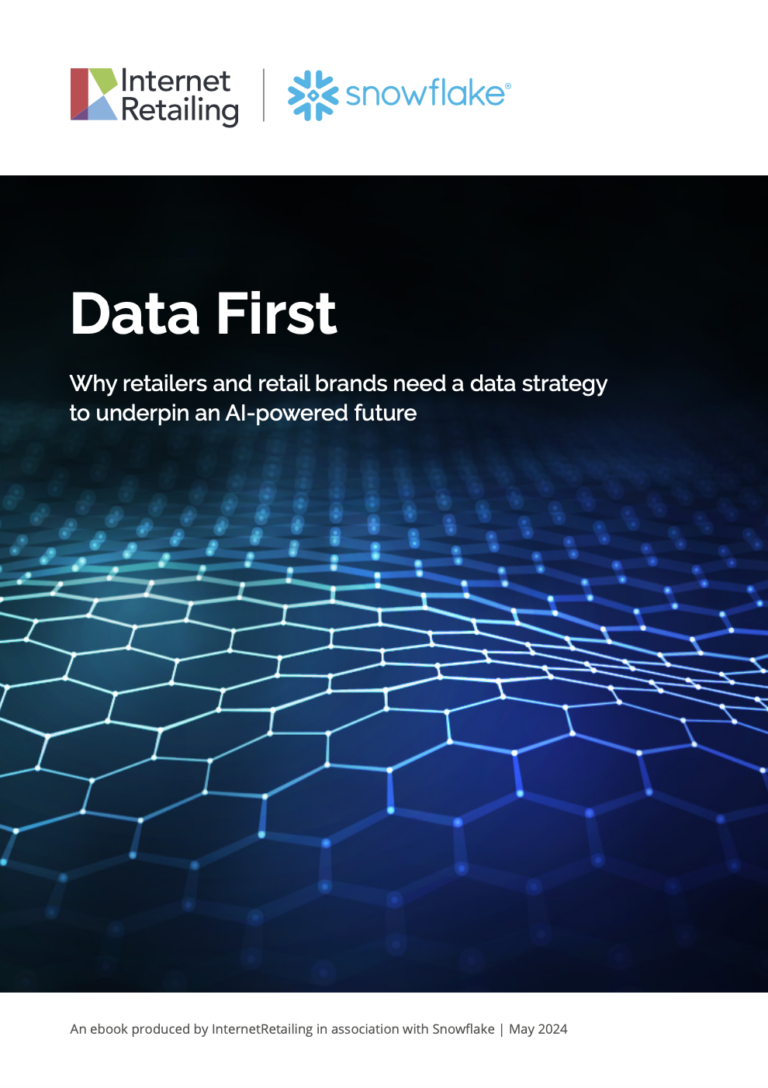Online grocery sales nearly doubled in October, while beyond food, sales grew fast as shoppers appeared to have turned online to buy early for Christmas, according to the latest official data. Clothing was the only sector where sales were still below pre-pandemic levels, as measured in February.
Last month, shoppers spent 7.9% more than they did in pre-pandemic February – spending 52.8% more online than they did in February, and 3.3% less in stores, according to the latest Office for National Statistics (ONS) Retail Sales report, for October 2020, in analysis that excludes both fuel and non-store sales.
In October 2020, shoppers spent 7.7% more than they did a year earlier to buy 7.8% more goods – excluding automotive fuel. They spent 1.5% more than they did in the previous month, to buy 1.3% more goods (again, excluding fuel). And they spent 7.9% more than they did in February 2020 – before Covid-19 was declared a pandemic – to buy 8.5% more goods.
Ecommerce grew faster, with shoppers spending 60.1% more online than they did a year earlier – and 5.7% more than the previous month. More than a quarter (28.5%) of all UK retail sales were online. That’s more than the 27.5% of sales made online in September and well ahead of the 20.1% of sales made online in February 2020. But it’s lower than peaks of 33.3% in May and 31.8% in June and, as last month, suggests that ecommerce was beginning to settle down at a higher rate until this month’s lockdown – when high levels of sales are expected to take place online.
“Most sectors recovered to a higher level than February and feedback from various retailers informed us that consumers appeared to be shopping earlier for Christmas this year, which has helped boost sales,” said the ONS Retail Sales report. “Clothing stores and fuel were the only sectors still below their pre-lockdown sales.”
How we spent online in October
Shoppers sent nearly twice as much on online groceries in October (+99.2%) as they did a year earlier, although the growth rate was only slightly higher (+0.4%) than in September. Some 10.4% of grocery sales took place online in October – up from 5.4% in pre-pandemic February and the same proportion as last month – suggesting a longer-term shift in the way that a small but significant minority now choose to buy their food.
And, shoppers spent 64.8% more online on non-food goods than they did a year earlier – and 2.8% more than the previous month. Some 24.2% all non-food retail transactions were online in September. The fastest growth was in department stores, where online sales were 87.2% higher than at the same time last year (and 0.9% higher than the previous month) and accounted for 30.2% of retail sales in the category.
Clothing, footwear and textile stores saw strong online growth on last year (+34.4%), with 28.2% of sales in this category now online. Spending here was also 2.3% higher than the previous month, suggesting a recovery in clothing and footwear sales, likely to be in the run up to Christmas. Clothing is the only sector – aside from fuel, which is not sold online in a retail context – where sales in October were still below those seen in February. One important reason for this is the Covid-19 secure restrictions affecting this category both during and after lockdown.
Household goods shops saw their online sales grow by 64.7% to account for 23% of retail sales in this category. They were up by 4.9% on the previous month. ‘Other’ stores, which include electricals, toyshops and bookshops, saw their ecommerce sales grow by 89.7% on last year, and by 3.4% on the previous month, to account for 18.8% of all sales.
There was also strong online growth in the non-store retailing category, where 83.1% of all sales take place online and primarily includes pureplay retailers. Sales here grew by 48.2% on the same time last year, and by 7.5% on the previous month.
“All sectors,” says the ONS Retail Sales Report for October, “saw an increase in online sales on the month, with some retailers taking advantage of promotional activity to encourage more spending.”
Industry warnings of delivery pressures
But high levels of online sales may mean high levels of pressure on delivery companies. IMRG and the BRC have previously warned shoppers to buy early for just that reason, and today’s figures may reflect that.
But today some delivery companies continued to warn retailers and shoppers to plan ahead.
Jason Tavaria, chief executive of locker delivery specialists InPost said: “It’s heartening to see that today’s retail figures remain strong, but this only highlights the extraordinary pressure on retailers during this exceptional festive season. They will struggle to cope with the increase in online demand in the run-up to Christmas, as distribution networks are already at near capacity keeping essential supplies moving during the lockdown. There is also little doubt we’ll see fewer festive shoppers out on the High Street; people will be ordering goods online for home delivery.
“We can’t stand by and allow retailers to go under because there isn’t enough capacity in the delivery network. Consolidating deliveries into lockers and other out-of-store click and collect locations could add much needed capacity this December. And with Covid, this kind of contact-free and low-risk delivery option will be even more important. Retailers should also let pressure out of the system this year with less reliance on intense promotion periods, such the upcoming Black Friday, and reducing the use of next- or same-day delivery where they can.
“And for shoppers the advice is very definitely to avoid the last-minute rush and get their Christmas shopping sorted early, or else they risk not receiving products ahead of the big day. After a tough year, no one wants a disappointing experience this Christmas.”
David Jinks, head of consumer research at ParcelHero, said: “All this is great news for online retailers, who even saw a 4.1% jump in sales over September’s strong results, but this surge in home deliveries points to an intensely busy seasonal peak.
‘Both consumers and retailers need to carefully plan this year to avoid the impact of this Mount Everest of Christmas peaks.









